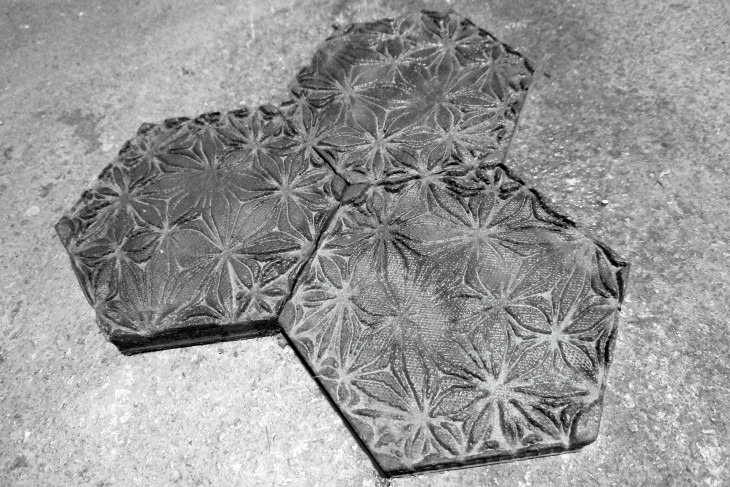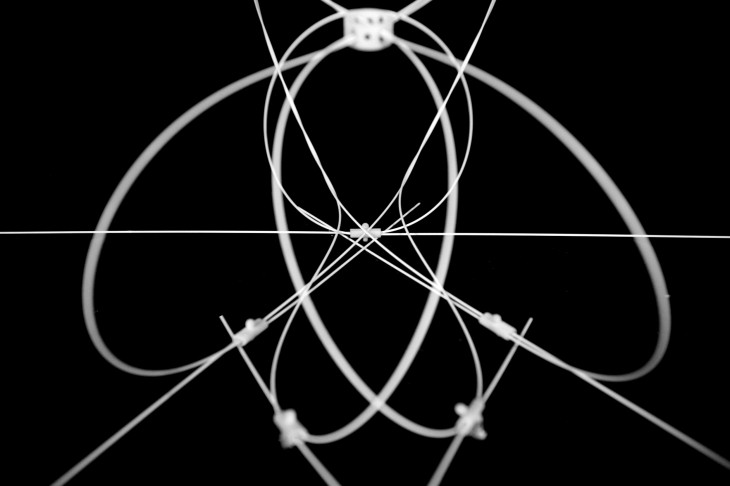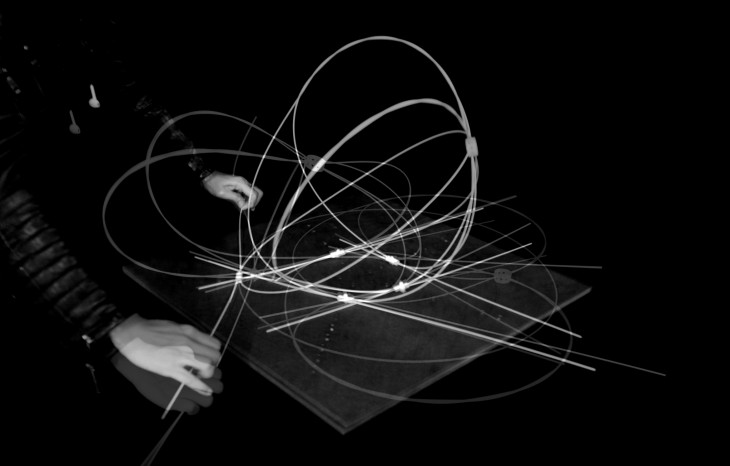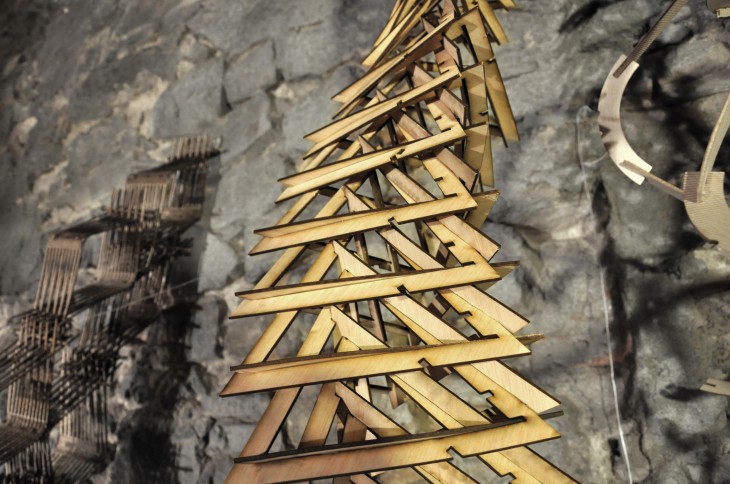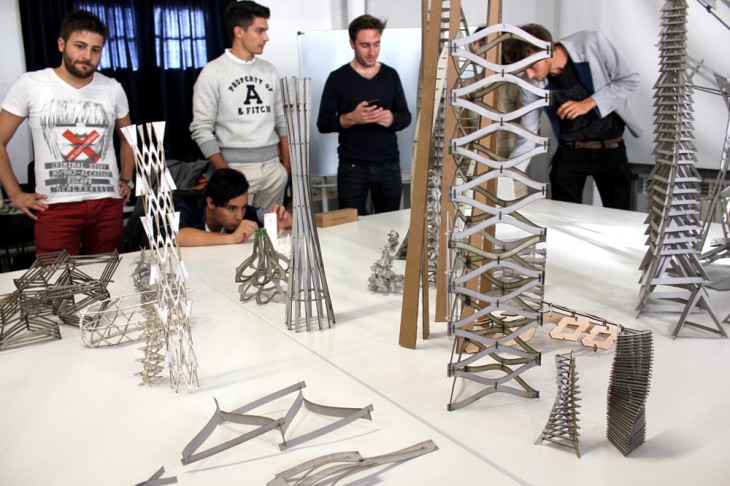Our intention with this experiment was to create a hexagonal grid within the tile boundaries which could be universally distorted to create topography or other dynamic surfaces for de-centralized irrigation to the edges. The channels for water flow are derived from this grid using a simple script and are embedded within an undulating surface so as to appear and disappear with the changing elevation. Through triangulation, we were able to manipulate the vertices of the grid independently in order to provide pathways for the flow of water, and allocate the zones for collecting and dispersing the water to neighboring tiles. Read More
Category Archives: Robert Douglas McKaye
circle 3D
Our approach was to create 5 large circles and to connect them to the base using a simple peg-like joint which could be moved around in our experiments and fixed for presentation. With a focus on the transition between 2 dimensional and 3 dimensional space, the intention was to create a sphere-like object out of circles that could be manipulated by a central ring through which they were threaded, and distorted by changing of their diameters. Read More
Laser cutting our way to the top
Structures arrived around 09:30 Wednesday morning Otober 16, 2013. MAA 2013-2014 students used the past week to explore materials, design, and digitally fabricate prototypical structures, joints, and connections. Groups, comprised of 3-4 students, were prompted to create the tallest structure scaled 1:5 made out of 1mm thick cardboard without the use of nails, glue, or any other supplementary material.
Size, shape, and geometry varied between groups and the ideas of advanced architecture as they are applied to lightweight structures were explored through a process of trial and error. Groups experimented with optimization of material, joints and construction process while considering weight and height constraints.
Tutors: Alexandre Dubor, Anastasia Pistofidou, & Edouard Cabay discussed each prototype and gave feedback encouraging students to crush, force, and push the structures to failure. Moving forward the goal is to create stronger structures by understanding the materials and how they will deform. This will be achieved through the analysis of failed members, connections, or supports of each structure.
Further constraints will be given in the following classes. Final installations, of plywood, will be presented on October 30, 2013.

